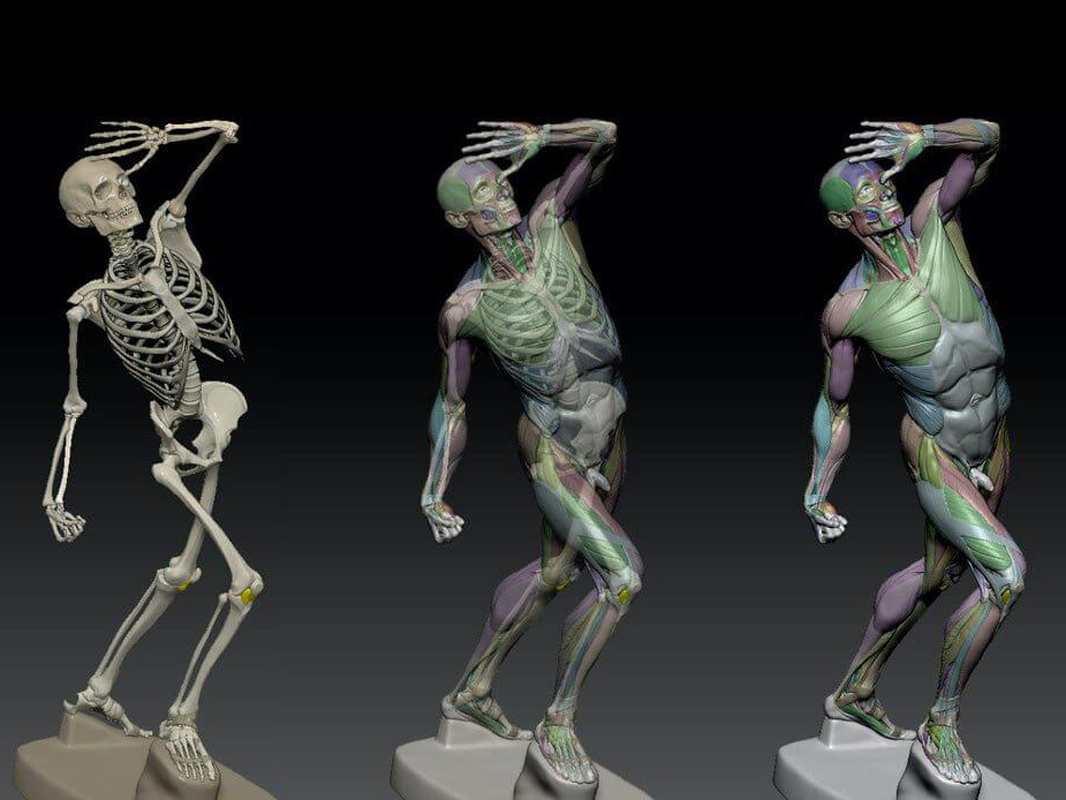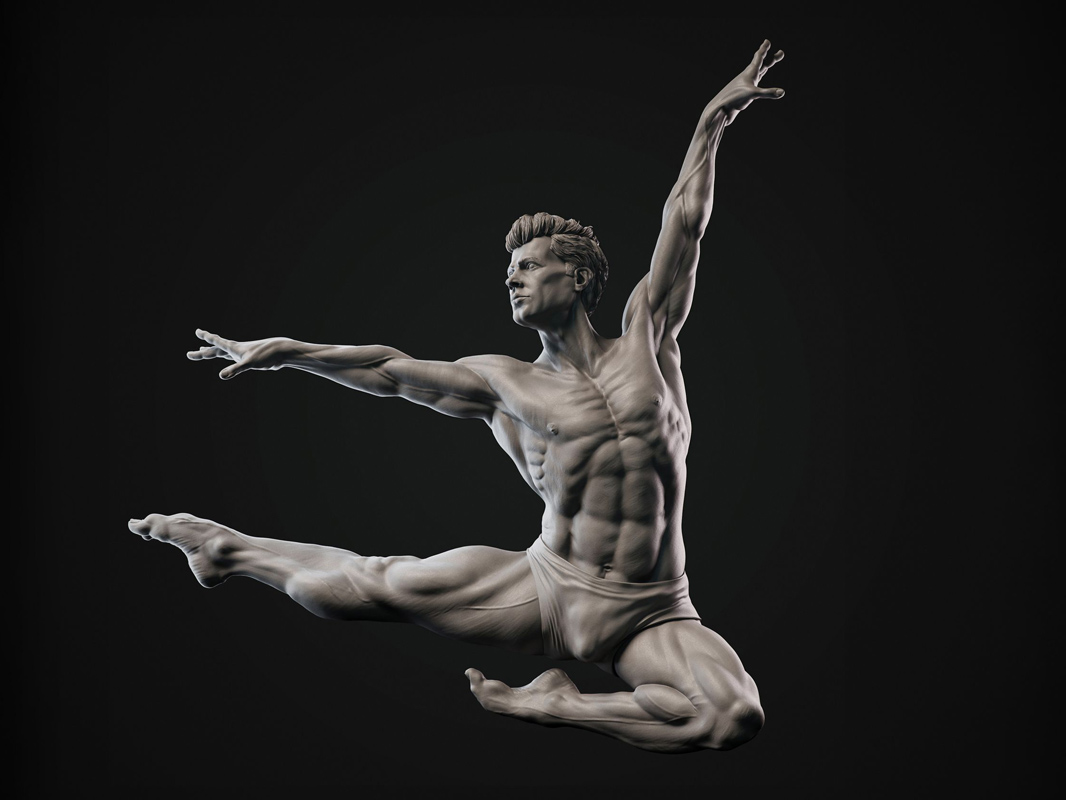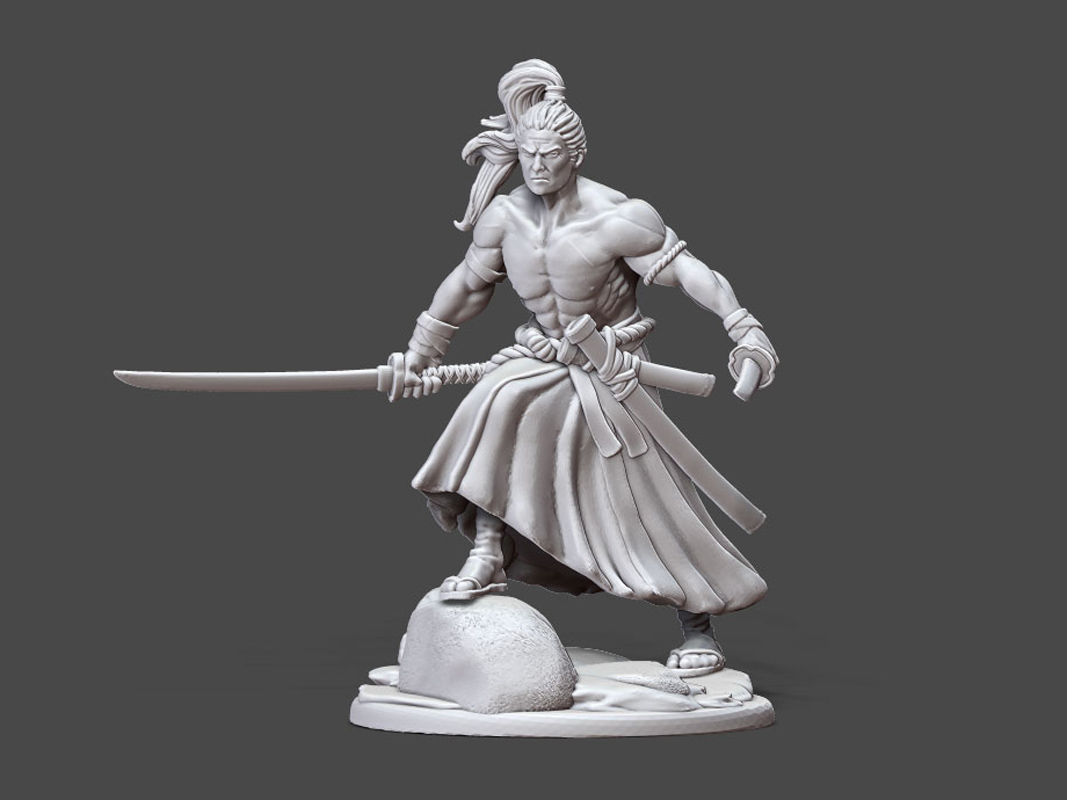Bringing your vision of a human figure to life through 3D printing is an exciting process. But translating a digital sculpt into a flawless physical print requires some special considerations. Here are some key tips, along with case studies to illustrate them, to ensure your 3D sculpted human figurine goes from the screen to your shelf with stunning results:
Anatomy is Key
Reference, Reference, Reference: Ground yourself in real-world anatomy. Use anatomical references and pose studies to ensure your figure’s proportions and musculature are believable.

Sculpting for Print Success
- Mind Your Details: While details are great, remember your printer’s resolution. Excessive fine details can get lost or cause printing issues. Focus on sculpting the larger form and key details that will translate well.
- Think About Thin Parts: Avoid overly thin limbs, fingers, or weapons. These delicate areas are prone to breaking during printing or requiring excessive support structures. Thicken them slightly for added strength.
- Separate it Out: Consider separating your figure into multiple pieces, especially at key points like the arms, legs, and head. This allows for easier printing, painting, and potential color variation.
- Pose with Purpose: Think about how your figurine will be displayed. Design the pose to be stable and visually appealing from the intended viewing angle.
Bringing it All Together
- Mirror, Mirror: Utilize the mirror function in your sculpting software to ensure symmetry, especially for facial features and limbs.
- Smooth Operator: Don’t neglect the smoothing stage. A clean, well-smoothed sculpt will print much better and require less post-processing.
- Test Prints are Your Friend: Before committing to a full print, consider creating a smaller test print to identify any potential issues with your sculpt.

Case Study
Superhero Landing
Imagine you’re sculpting a superhero landing in a dynamic pose. Reference photos of athletes in similar poses, paying close attention to how weight is distributed and how muscles contract and flex. This ensures your superhero looks powerful and believable.
- Start Simple: Begin with a basic T-pose before moving on to more complex poses. This allows you to focus on getting the core anatomy right before adding dynamic elements.
Bust of a Wise Elder
For a bust of a wise elder, start with a T-pose and focus on sculpting the head and torso. Reference photos of elderly faces, paying attention to wrinkles, sagging skin, and the distribution of facial features. Once the core anatomy is sculpted, you can add details like a beard or specific clothing.
Sculpting for Print Success:
- Mind Your Details: While details are great, remember your printer’s resolution. Excessive fine details can get lost or cause printing issues. Focus on sculpting the larger form and key details that will translate well.

Ornate Armor
You’re sculpting a knight in ornate armor. Resist the urge to add every tiny buckle and rivet. Instead, focus on the larger shapes and textures of the armor plates. You can add some key details to suggest the ornate design, but be mindful of scale and printability.
- Think About Thin Parts: Avoid overly thin limbs, fingers, or weapons. These delicate areas are prone to breaking during printing or requiring excessive support structures. Thicken them slightly for added strength.

Elven Archer
When sculpting an elf with a drawn bow, consider the thickness of the arrow nock and the elf’s fingers holding it. Thicken these areas slightly to ensure they print cleanly and don’t break under the pressure of the pose.
- Separate it Out: Consider separating your figure into multiple pieces, especially at key points like the arms, legs, and head. This allows for easier printing, painting, and potential color variation.
Samurai Warrior
A samurai warrior’s armor can be separated into multiple pieces for printing. The helmet, torso, arms, and legs can all be sculpted individually, allowing for better detail on each section and easier post-processing.
- Pose with Purpose: Think about how your figurine will be displayed. Design the pose to be stable and visually appealing from the intended viewing angle.

Statue for a Shelf
If your figurine is meant to be displayed on a shelf, create a pose that has a flat base for stability. You can add a slight tilt or turn of the head for visual interest, but ensure the center of gravity is low enough to prevent tipping.
Bringing it All Together
- Mirror, Mirror: Utilize the mirror function in your sculpting software to ensure symmetry, especially for facial features and limbs.
- Smooth Operator: Don’t neglect the smoothing stage. A clean, well-smoothed sculpt will print much better and require less post-processing.
- Test Prints are Your Friend: Before committing to a full print, consider creating a smaller test print to identify any potential issues with your sculpt.
Bonus Tip: For the Painters
If you plan on painting your figurine, consider incorporating subtle textural details during the sculpting process. This can add visual interest and provide a better surface for paint adhesion.
By following these tips and considering the case studies, you’ll be well on your way to creating stunning 3D-printed human figurines that showcase your artistic vision and translate flawlessly from digital to physical form.
Bringing Your Vision to Life: The Final Step
With your meticulously sculpted human figurine ready for print, the final step is choosing the right 3D printing service. Here at FacFox, we specialize in bringing your digital creations to life with high-quality printing, meticulous attention to detail, and a wide range of materials to perfectly capture your vision.
Our team of experts can handle intricate details, multiple-part printing, and offer various finishing options to ensure your 3D-printed human figurine is a masterpiece. Upload your sculpt today and get a free quote to see how FacFox can transform your digital art into a stunning physical collectible!